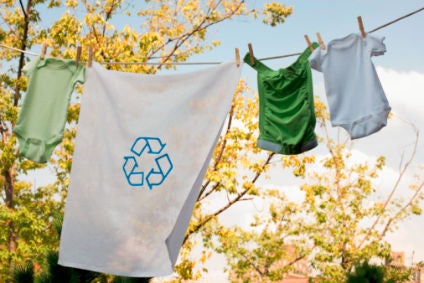
The European textiles and clothing sector has welcomed the Commission’s new Circularity Action Plan but says it needs to now set the conditions to remove structural barriers, address or prevent market failures, and bring “harmonised solutions” across the European single market.
Launched yesterday (11 March), the Circular Economy Action Plan – one of the main building blocks of the European Green Deal – could see the bloc’s clothing and textile manufacturers and importers face strict environmental rules aimed at cleaning up production. It addresses some of the product groups with the largest environmental footprints, including electronics, construction, packaging, and automotives.
The aim, the Commission says, is to make the economy “fit for a green future”, strengthen Europe’s competitiveness while protecting the environment and giving new rights to consumers.
For the textile sector, the proposal is to “strengthen competitiveness and innovation” in the industry and boost the EU market for textile reuse. The new strategy is designed to support new consumption patterns and business models.
The European Apparel and Textile Confederation (Euratex) says the initiative reflects many proposals developed by the industry, but that it is “just the starting point for developing a more focused strategy, which must take into account the specific challenges of our sector”.
“This plan can be the starting point for a new structural dialogue with the EU and partners of the value chain,” says Euratex director-general Dirk Vantyghem. “All the actors need to agree on what has to be changed and how to unleash circular textile products.”
The industry body is asking the European Commission to focus on the following points:
- 99% of the textile and apparel industry is composed by SMEs. The EU needs to take into consideration their specificities. In particular, SMEs lack fund to upscale their products and solutions, plus they need a legislative framework which is not burdensome. We ask the EU to remove barriers, not create new ones.
- Companies need a territory that can deal with the whole circularity process. A company, which produces textiles by recycling used clothes or other fibres, should have a textile recycling facility in the vicinity, not 250km away. We, therefore, welcome the proposal of the European Commission to provide guidance to achieve high levels of separate collection of textile waste by 2025. It must be done in a well-organised manner, so to avoid tonnes of waste textile waiting to be processed.
- Green Public Procurement will increase demand allowing business to invest in circularity. In 2015, public procurement accounted for 13.1 % of the GDP in the EU, this means that almost EUR1.92bn (US$2.16bn) was spent by public bodies purchasing goods or services. That is a formidable leverage which Member States can use to boost closed-loop productions, promote scale economies which lower costs and proactively drive changes. Authorities can then choose high quality and durable products, reward low-impact manufacturing processes, and favour products designed with recycled or biobased/biodegradable materials.



